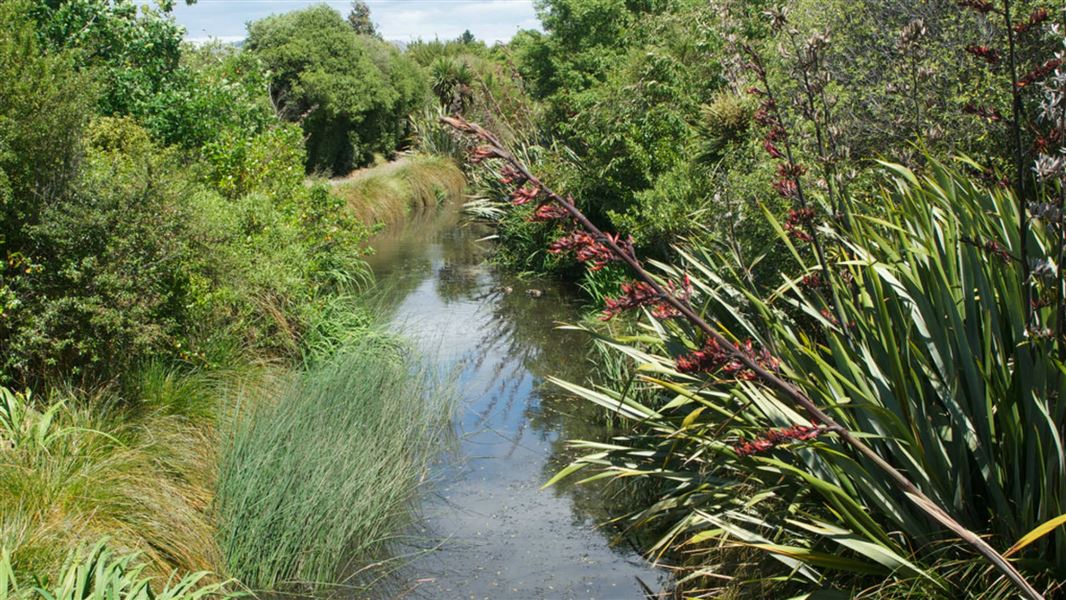Restoring these habitats recreates the conditions that freshwater species need to live, breed and migrate so their populations can increase. The restored habitats are also more attractive and enjoyable for people to visit.
Restoration projects should be well planned so that when they are complete, all the habitats needed by different fish species and different life stages are included.
Restoration project case studies
These examples of habitat restoration are from different organisations from around New Zealand. While every project is different, the examples show how different challenges were overcome and provide information on the techniques and approaches that were trialled.
Creating riffle, gravel and riverbank habitats
Location: Ōtākaro/Avon River, Christchurch
In central Christchurch, riffles and rapids, clean gravel substrate and low riverbanks were created in a previously silt-filled river that now supports a growing number of native fish.
Naturalising an artificial channel
Location: No. 2 Drain, Christchurch
An existing drainage channel in Christchurch was restored to a naturalised stream by creating fast flowing riffle habitat with a clean stony substrate suitable for native fish, including bluegill bullies.
Project description (PDF, 700K).
Enhancing intertidal habitat for whitebait spawning
Location: Whauwhautahi Stream, Waikato
Ponds and backwater channels were excavated, sloping banks created, and riparian areas planted with natives along this tributary of the Waikato River to create more habitat for īnanga spawning.
Project description (PDF, 647K).
Creating backwater habitat to enhance whitebait spawning
Location: Cobden Island, Grey River, Greymouth
A low-lying island in the lower Grey River was turned into īnanga spawning habitat by creating backwater channels and planting with native species. Local volunteers made a big contribution to the project’s success with planting and weeding.
Creating instream cover by adding artificial fish habitat devices
Location: Waikato
Artificial structures placed in streams (to create instream cover for fish to hide) have been trialled in urban and rural Waikato streams. ‘Tuna townhouses’, ‘kōkopu condos’ and pallet shelters were compared to see how often effective they were at providing cover for native fish.
Project description (PDF, 532K).
Naturalising banks to enhance instream habitat
Location: Christchurch
Sub-urban streams were restored with boulders and tree trunks to provide instream cover, while planting along the banks allowed for fish shelter and spawning.
Project description (PDF, 3,180K).
Enhancing habitat for native fish by riparian planting
Location: Hakarimata Streams, Waikato
In this 20-year project, fish populations increased after the riverbanks were restored by planting with native species.
Project description (PDF, 905K).
Restoring fish passage past instream structures
Many of our native freshwater fish are migratory and need to move between the sea and rivers to complete their lifecycles. They also migrate upstream and downstream between different habitats within freshwater. Restoring passage, so that fish can reach the habitats they need, is a very important part of stream restoration.
See fish passage management for more information and case studies about attempts to improve a variety of different types of fish passage barriers in New Zealand waterways.
